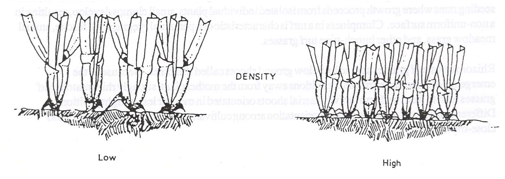Turf Grass Density
So far in our performance evaluation of the bowling green we have listed out the key factors and have taken a closer look at the first of these when we talked yesterday about Uniformity.
Today we’ll look at the next factor in the list which is turf density. This is another of the evaluation parameters that is mostly visual, but it can be “scienced” up a bit to make it more quantitative if you like, by using a quadrat. For our purposes a visual examination will suffice.
Density explained.
Density is one of the most important components of turf grass quality as it knocks on to performance in terms of green smoothness, speed and trueness of the run of the green. Turf density is also a major influence on the ability of other non-desirable species to take hold.
As mentioned already, turf grass density can be measured quantitatively by counting the number of shoots or leaves per unit area. A high turf grass density or plant population is desirable due to increased competition it provides against invading weeds and weed grasses. Moss also takes advantage of any spaces in the turf, so maintaining turf density actively guards against this problem too.
Shoot densities vary among turf grass species and cultivars. The shoot density of any one turf grass cultivar also varies widely depending on the cultural maintenance regime (aeration, mowing etc), surrounding environment and the time of year. The rate of seeding and degree of initial establishment can also be important factors in determining the shoot density of the non-creeping turf grass species. Adequate soil moisture, close mowing and nitrogen fertilisation generally increase the shoot density. One of the highest turf grass shoot densities occurs on bentgrass greens with over 1,700 shoots per square decimetre (10cmX10cm) being recorded. This is equivalent to 164.8 billion bentgrass shoots per acre.
For now it will be enough to make a visual appraisal of how dense your turf is. Are there clearly visible spaces in the turf? If you brush the turf upright with your hand, can you see bare soil between the individual grass plants?
Have a look and also check to see if the density differs across your green. Can you come up with reasons that this might be happening?
Next time we will look at the next factor on my list; Texture. This time we’re not talking soil texture, but the actual texture of the grass itself. Until then try to make some appraisal of your turf density.
This article is the 3rd in a series on the Performance Evaluation of the Bowling Green:


